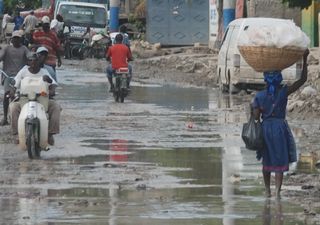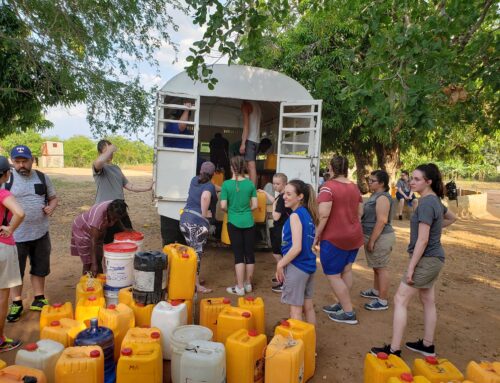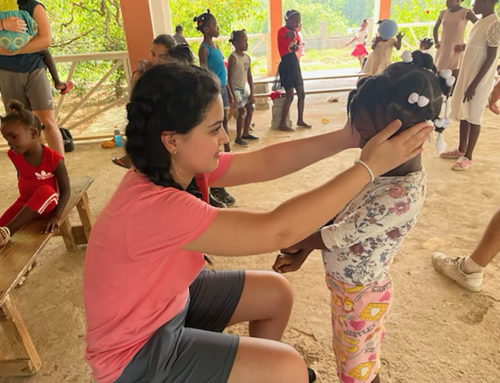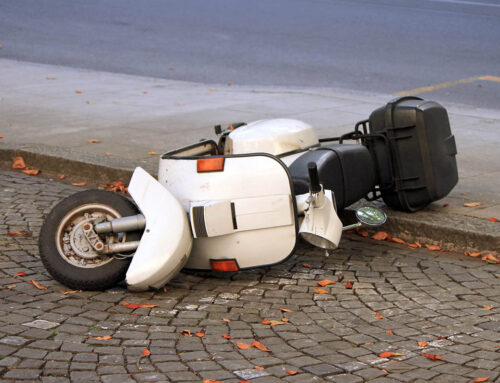November 26, 2010
I just returned from Haiti, where I was reminded once again how difficult life is for the people who live there. No matter how many times I go and how long I spend there, the need always overwhelms me. Just as the Haitian people feel they’re able to take a breath, another tragedy strikes. This time it is an epidemic of cholera that has taken the lives of over 1,500 souls in barely 6 weeks. 
There is no end in sight for stemming the tide, and preventing the spread of the disease is almost impossible. The picture on the right (taken in May at one of our medical clinics in a remote village) is worth a thousand words.
Cholera is easily treated, provided you can get to a doctor and rehydrate your body. The danger is you can become dehydrated in only a few hours, without even knowing that you have become deathly ill. There are very few hospitals in Haiti to begin with, and nearly all of them are already filled to capacity with cholera victims and turning people away. There have been multiple reports of people dying alongside the road, as they tried to walk to a hospital or clinic. Tap-Tap drivers are afraid to transport sick people to a doctor, and some doctors have refused to treat patients they suspect have cholera. As Joseph and I talked about the inevitability of cholera reaching Ouanaminthe, he pointed out the futility of all the warnings being issued by the Haitian government. “It does not help,” Joseph said, “ to be told to wash your hands, when you have no soap!” And he also said that it does not help to be told to drink only bottled water, when almost no Haitians can possibly afford to buy it. The living conditions in Haiti are deplorable, which makes the spreading of a disease like cholera a given. To be able to afford a flush toilet, with a concrete holding tank for waste, is a luxury that only a few of the millions of people in Haiti can afford. Every time it rains heavily there is flooding, and the hand-dug septics outside every Haitian’s home overflow onto the ground and into the streets.
I arrived the day Hurricane Tomas hit the island, and during my first night in Haiti there was torrential rainfall. Around 2 am that first night, hundreds of people filled the streets outside our mission house shouting to one another. When I got up to see what was going on, one of my Haitian friends said homes throughout Ouanaminthe were flooding, and people were in the streets trying to stay as dry as possible. I was speechless, because hundreds of people in our neighborhood and hundreds more throughout the city were standing in the streets in a solid DSC_0126 downpour that lasted all night! One section of Ouanaminthe where man people live close to the Masacre River had to be completely evacuated during the night. Perhaps the most amazing thing about all the flooding was how little complaining I heard the next morning. “After a mountain . . . another mountain,” the Haitian proverb wisely admonishes.
While Joseph and I were in L’Acajou measuring the section where Aslan’s medical clinic will go, he introduced me to Gentilia, a sweet young woman from L’Acajou who had been living in Port-au-Prince and studying to be a nurse. She must still complete her senior year of nursing school, but she doesn’t want to return to Port-au-Prince to live in a tent city. The day before I returned to the States, Joseph and I visited Gentilia in her tiny hut across the street from our land where she and 7 other family members live. She was sick in bed with a high fever, so Joseph and I took the motorcycle back to Ouanaminthe where I got her some Tylenol and Pepto-Bismol. I also had Joseph stop for a 5-gallon bottle of clean drinking water and a plate of cooked chicken. She was so appreciative of this small gesture of kindness on our parts.
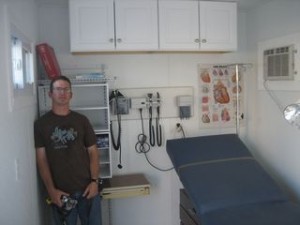 Please pray for Haiti and for our many friends there. The building of our clinic has begun in Kansas City! Within 90 days from November 1, three steel buildings will be completed and ready to ship to Haiti. Our goal is to have the units on the ground in IMG_2623
Please pray for Haiti and for our many friends there. The building of our clinic has begun in Kansas City! Within 90 days from November 1, three steel buildings will be completed and ready to ship to Haiti. Our goal is to have the units on the ground in IMG_2623
L’Acajou in February, with the doors to our clinic open by March 1. This first phase of our medical center will include two examination rooms (like the one pictured on the left); one dental/optical room; a laboratory; a radiology room; a pharmacy; a reception area; and, an area for medical staff that includes bathrooms and a kitchen. Because we’re building with steel, our clinic is earthquake and hurricane proof. All the medical equipment (exam tables, X-ray equipment, etc.) comes with the structure, so after connecting the 3 buildings the facility will be 100 percent operational.
All of this is possible, because of God’s grace and because of your generosity. And it will be completed almost one year from the date of the earthquake that took so many lives. There is such discouragement among the Haitian people because of how little promised earthquake relief aid has reached this devastated nation . . . and now the cholera epidemic. Aslan is a bright spot of hope amidst all the discouragement, and our clinic will save countless lives in the months and years to come.
Till next time!
Craig
P.S. Pictured below is one our units currently being built in Wichita, Kansas!

